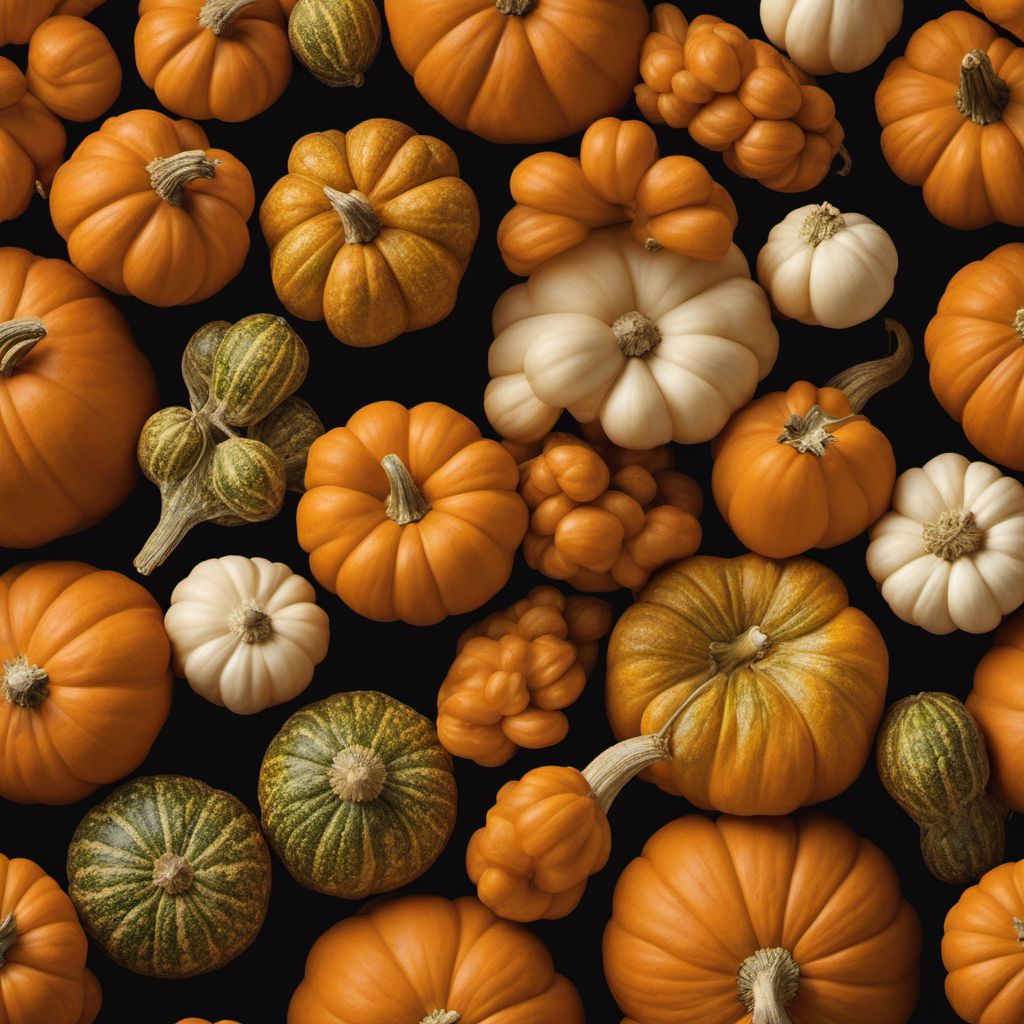
Ingredient
Pumpkin seeds
The Mighty Powerhouses of Nutrition
Pumpkin seeds, also known as pepitas, have a nutty and slightly sweet flavor. They have a firm yet tender texture and are typically green in color, although some varieties may have a white outer shell. These seeds are often roasted to enhance their taste and texture, resulting in a crispy and satisfying snack. They are commonly used as a topping or ingredient in salads, granola bars, baked goods, and trail mixes.
Origins and history
Pumpkin seeds have a rich history that dates back thousands of years. They were first cultivated in the Americas by indigenous people who recognized their nutritional value. Pumpkin seeds were highly valued for their medicinal properties and were used to treat various ailments. Over time, they spread to other parts of the world and became an integral part of different cuisines and cultures.
Nutritional information
Pumpkin seeds are a nutritional powerhouse, rich in essential nutrients such as protein, fiber, healthy fats, vitamins, and minerals. They are particularly high in magnesium, zinc, iron, and antioxidants. A 1-ounce (28 grams) serving of pumpkin seeds provides approximately 151 calories, 7 grams of protein, 13 grams of fat, 1.7 grams of fiber, and various vitamins and minerals.
Allergens
May contain traces of tree nuts and peanuts.
How to select
When selecting pumpkin seeds, look for ones that are plump, firm, and free from cracks or holes. The shells should be intact and not discolored. Opt for raw or unsalted pumpkin seeds to have more control over the flavor and seasoning. If buying pre-packaged, check the expiration date to ensure freshness.
Storage recommendations
To maintain the freshness and quality of pumpkin seeds, store them in an airtight container in a cool, dry place, such as a pantry or cupboard. Avoid exposing them to heat, moisture, or direct sunlight, as these can cause the seeds to spoil or become rancid. Properly stored pumpkin seeds can last for several months.
How to produce
Pumpkin seeds can be easily produced by growing pumpkins in your own garden. Start by selecting a pumpkin variety that is known for its seeds, such as the hulless or oilseed varieties. Harvest the pumpkins when they are fully ripe, remove the seeds, and clean them thoroughly. Allow the seeds to dry before storing or roasting them.
Preparation tips
Pumpkin seeds can be enjoyed in various ways. They can be roasted and seasoned with spices like salt, cinnamon, or paprika for a flavorful snack. Add them to salads, soups, or stir-fries for an extra crunch. Incorporate them into baked goods like bread, muffins, or cookies for added texture and nutrition. You can also grind them into a fine powder and use it as a coating for meats or as an ingredient in sauces and dressings.
Substitutions
Sunflower seeds, sesame seeds, or chopped nuts can be used as substitutes for pumpkin seeds in recipes. However, keep in mind that the flavor and texture may vary slightly.
Culinary uses
Pumpkin seeds are commonly used in both sweet and savory dishes. They are often sprinkled on top of salads, yogurt, or oatmeal for added crunch. They can be incorporated into granola bars, energy balls, or trail mixes for a nutritious boost. Pumpkin seed oil is also popular in dressings, marinades, and dips. In Mexican cuisine, pumpkin seeds are ground into a paste called pipian" and used as a base for sauces and moles."
Availability
Pumpkin seeds are commonly available in North America, Europe, and parts of Asia. They are cultivated in countries such as the United States, Mexico, China, India, and Austria.
More ingredients from this category
Recipes using Pumpkin seeds » Browse all

British-style Pipian Stew
Savory Nutty Delight: British-style Pipian Stew

Enmoladas with Chicken and Mole Sauce
Mexican Delight: Enmoladas - A Flavorful Twist on Traditional Mole

Kneippbrød - Norwegian Whole Grain Bread
Hearty Harvest: A Nutritious Norwegian Whole Grain Bread

Authentic Mexican Mole Poblano
Spicy Chocolate Delight: Authentic Mexican Mole Poblano Recipe
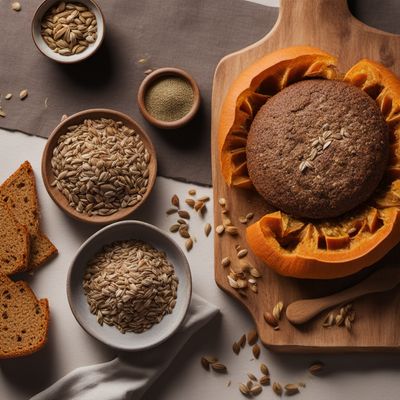
Aromanian-inspired Rugbrød
Savory Aromanian Rye Bread: A Hearty Delight
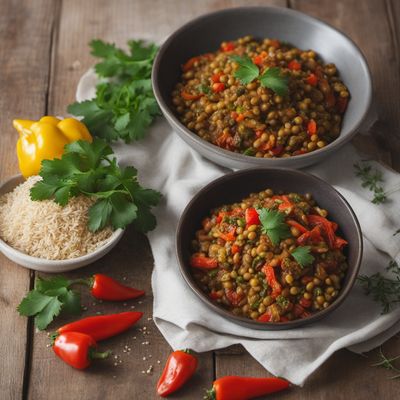
Moldovan-style Pepita con Tasajo
Savory Moldovan Pepita with Tasajo: A Delightful Fusion of Flavors
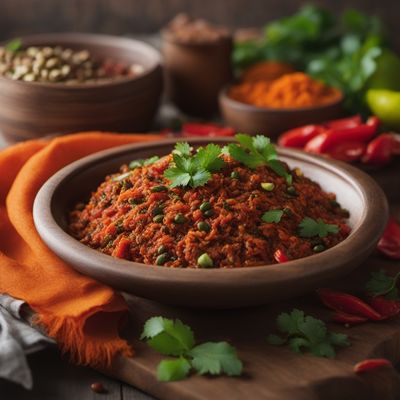
Pepián de Cuy with Guatemalan Flavors
Guatemalan Delight: Savory Pepián de Cuy

Northeastern American Bisciola
Maple-infused Harvest Bread: A Northeastern American Twist on Bisciola

Pepita con Tasajo with Roasted Tomatillo Salsa
Savory Pumpkin Seed and Beef Stir-Fry with Tangy Tomatillo Sauce

Papadzules with a Twist
Savory Enchiladas: Papadzules Reinvented
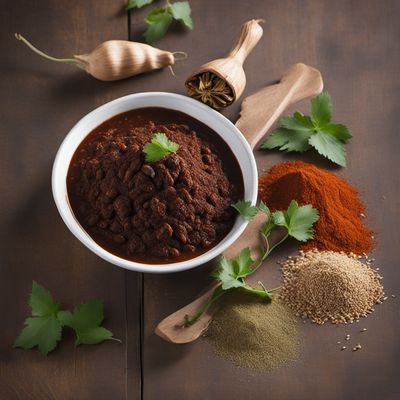
Authentic Mexican Mole Coloradito
Spicy and Savory Mexican Mole Coloradito: A Fiery Delight for Your Taste Buds

Vegetarian Frøsnapper
Crispy Seed-Crusted Vegetarian Delight